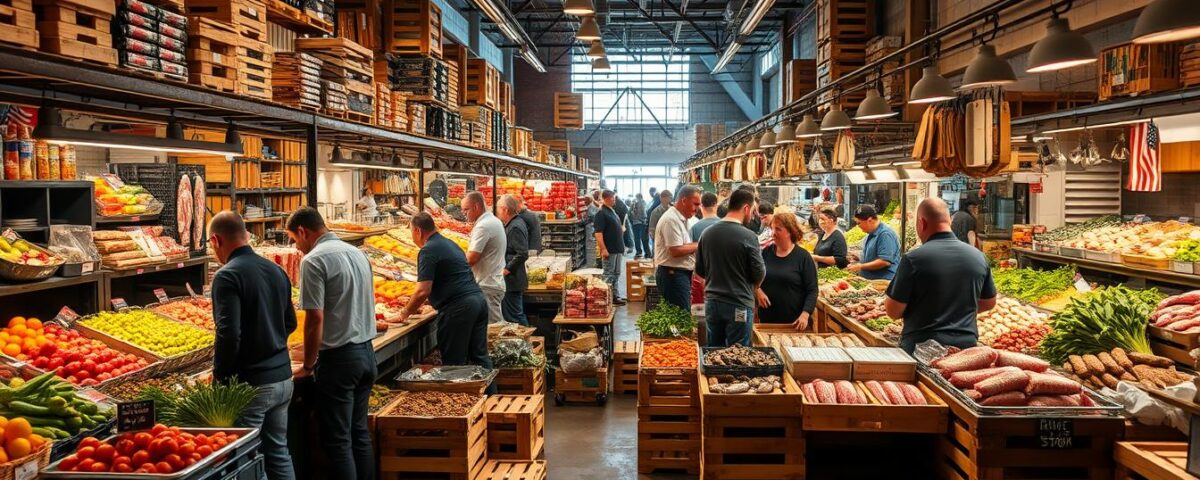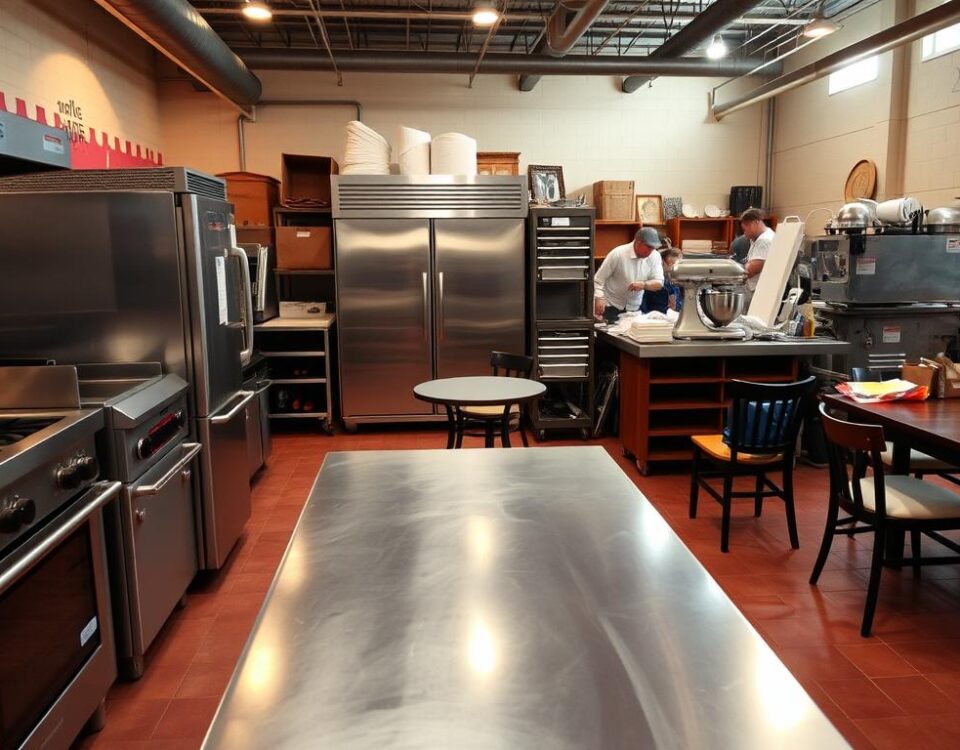
5 Holiday Marketing Campaigns That Doubled Restaurant Sales
August 14, 2025
Why Picking the Wrong Distributor Can Harm Your 2025 Food Costs
August 15, 2025As a restaurant owner, you’re likely no stranger to the challenges of finding the right food suppliers. Every minute you spend with suboptimal partners directly impacts your bottom line. Last year, restaurants that switched to optimal suppliers saw profit margins increase by up to 23%, while those that didn’t continued to struggle.
The harsh reality is that 60% of new restaurants fail within their first year, often due to inefficient supply chain management. In today’s competitive market, finding the right distribution partners is crucial for survival.
I’ll be breaking down the top food distributors that can help you boost your profit margins and stay ahead in the game.
Key Takeaways
- The right food suppliers can increase your restaurant’s profit margins by up to 23%.
- 60% of new restaurants fail within their first year, often due to inefficient supply chain management.
- Partnering with the best food distributors can be a critical advantage in today’s competitive market.
- The distribution landscape has changed dramatically since 2023, affecting food quality and operational efficiency.
- Top food distributors are leveraging technology and sustainability practices to provide better value.
The Evolving Landscape of Restaurant Food Distribution in 2025
The year 2025 has brought about a new era in restaurant food distribution, marked by technological advancements and shifting consumer demands. The restaurant supply landscape has changed dramatically, rendering what worked well in 2023 outdated. New distribution models, technology integration, and changing consumer expectations have created both challenges and opportunities for restaurant owners.
I’ve observed that the food distribution landscape has undergone significant transformation since 2023, with new technologies and business models reshaping how restaurants source their ingredients. The right food distributor is crucial for a restaurant’s success, providing more than just competitive pricing.
Why Choosing the Right Food Distributor Matters
Selecting the right food distributor is no longer just about getting the lowest prices; it’s about finding partners who can provide reliability, quality, and specialized services that align with your restaurant’s unique needs. The right distributor can significantly impact your restaurant’s efficiency and bottom line.
| Distributor Characteristics | Importance for Restaurants |
|---|---|
| Reliability | Ensures consistent supply |
| Quality | Impacts menu offerings and customer satisfaction |
| Specialized Services | Supports unique restaurant needs |
How the Distribution Landscape Has Changed Since 2023
Since 2023, the foodservice industry has seen significant changes, including increased focus on transparency, sustainability, and technology integration. Supply chain disruptions and inflation have forced distributors to adapt their business models, creating both challenges and opportunities for restaurant owners. Market consolidation among major distributors has affected pricing, service quality, and product availability.
The impact of these changes is multifaceted, influencing various aspects of the food distribution process. Understanding these changes is crucial for restaurant owners to make informed decisions about their distribution partnerships.
How We Selected the Best Food Distributors for Restaurants 2025
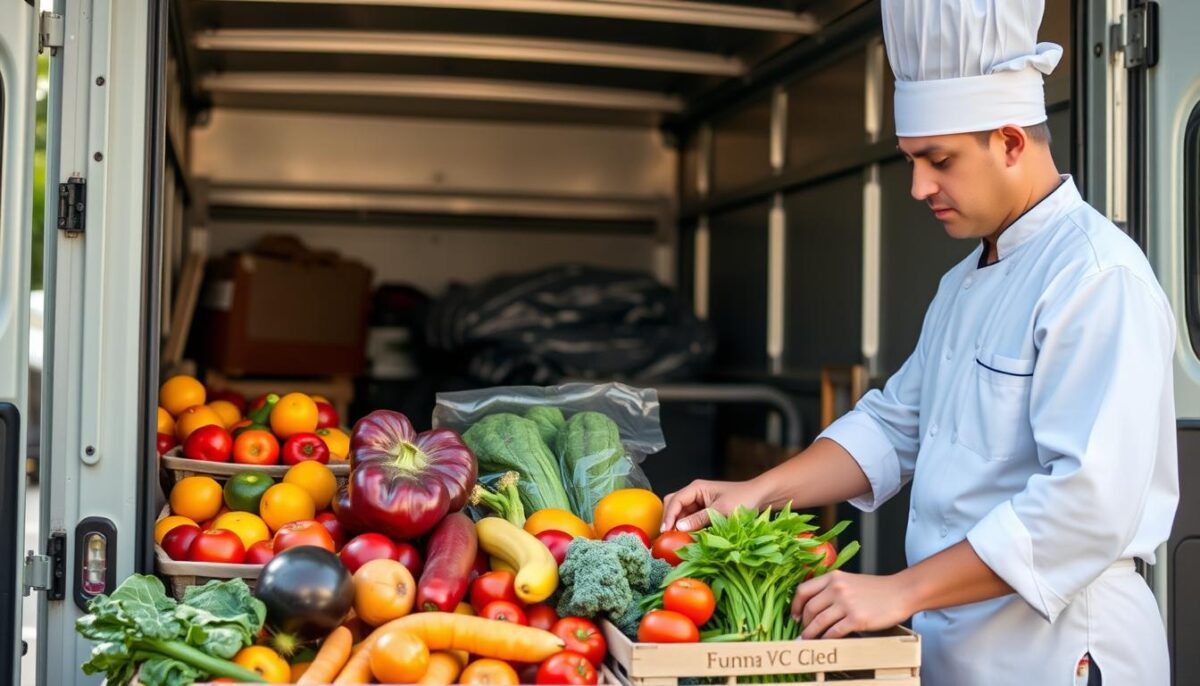
To identify the best food distributors for restaurants in 2025, we employed a rigorous evaluation process. This involved consulting with over 20 industry experts who have decades of combined experience in the restaurant and food distribution sectors.
Key Evaluation Criteria
Our analysis focused on several key factors, including annual revenue, founding date, number of customers and facilities, type of clients served, and industry specializations. We also examined each distributor’s financial stability, geographic reach, product quality, delivery reliability, and customer service.
Expert Insights and Market Analysis
We gathered valuable insights from our experts about the current state of the food distribution market. Our analysis revealed that the top distributors have adapted to recent supply chain challenges and have implemented effective strategies to maintain consistent product availability. We also evaluated each company’s technology integration, sustainability initiatives, and specialty product offerings to identify the leaders in the industry.
Our rigorous methodology included analyzing data from industry experts and evaluating distributors based on factors that directly impact business success. We considered feedback from actual restaurant owners about their experiences with these distributors, focusing on real-world performance rather than marketing claims.
Top 5 National Food Distributors for Restaurants
In 2025, the restaurant industry is supported by a handful of major food distributors that stand out for their service, product variety, and technological advancements. These distributors play a crucial role in ensuring that restaurants receive high-quality products on time, allowing them to focus on providing excellent customer service.
1. Sysco Corporation
Sysco Corporation remains the top food distributor in the USA, with an annual revenue of over $68 billion and 333 distribution facilities across the country. Their extensive network and product variety make them the go-to choice for restaurants of all sizes.
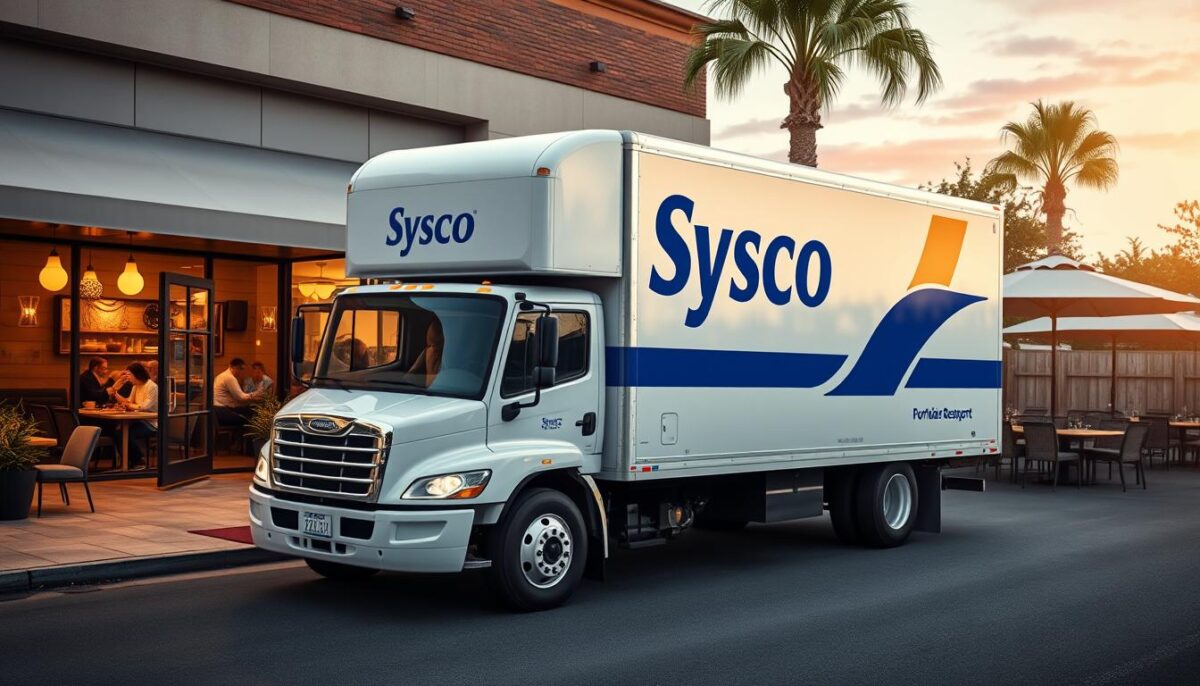
2. US Foods
US Foods is another major player in the food distribution industry, serving over 300,000 customers with a robust technology platform that helps restaurants manage inventory and control costs. Their private-label products are also a significant draw for cost-conscious restaurant owners.
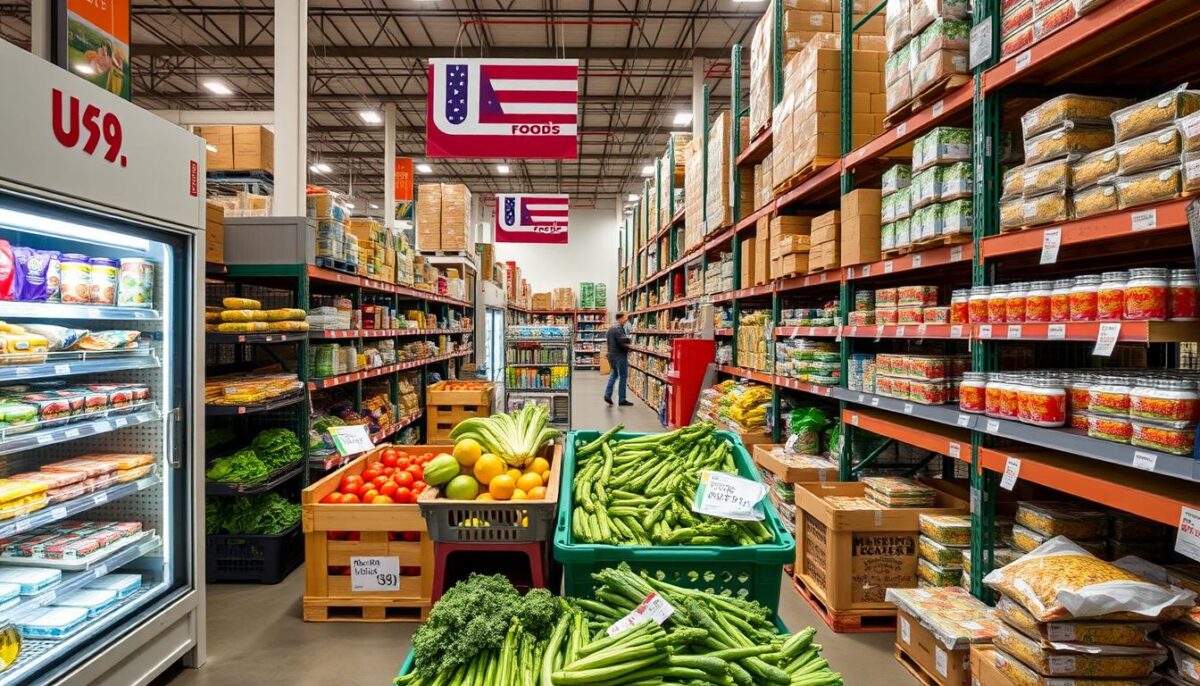
3. Performance Food Group (PFG)
Performance Food Group, with its network of over 150 distribution centers, provides exceptional service to both independent restaurants and national chain restaurants. Their ability to serve all 50 states makes them a reliable choice for restaurants with multiple locations.
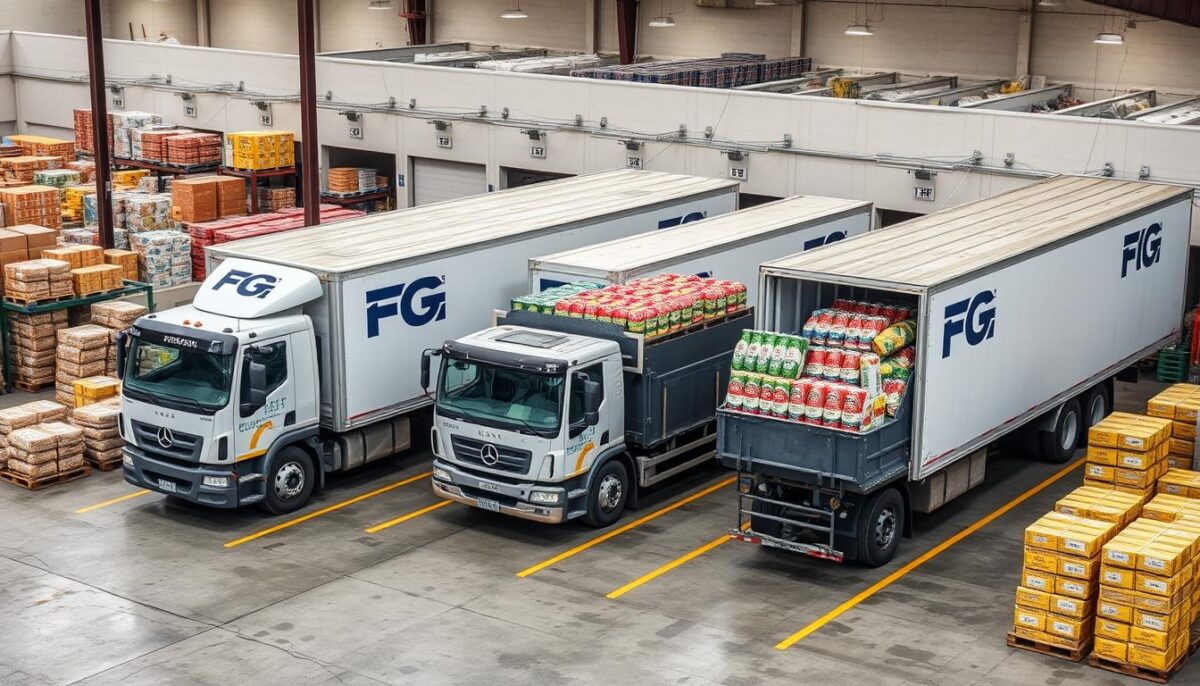
4. Gordon Food Service (GFS)
Gordon Food Service, a family-owned business, is known for its personalized service and commitment to sustainability. Serving over 100,000 customers across the US and Canada, GFS is a strong option for restaurants looking for a distributor that aligns with their values.
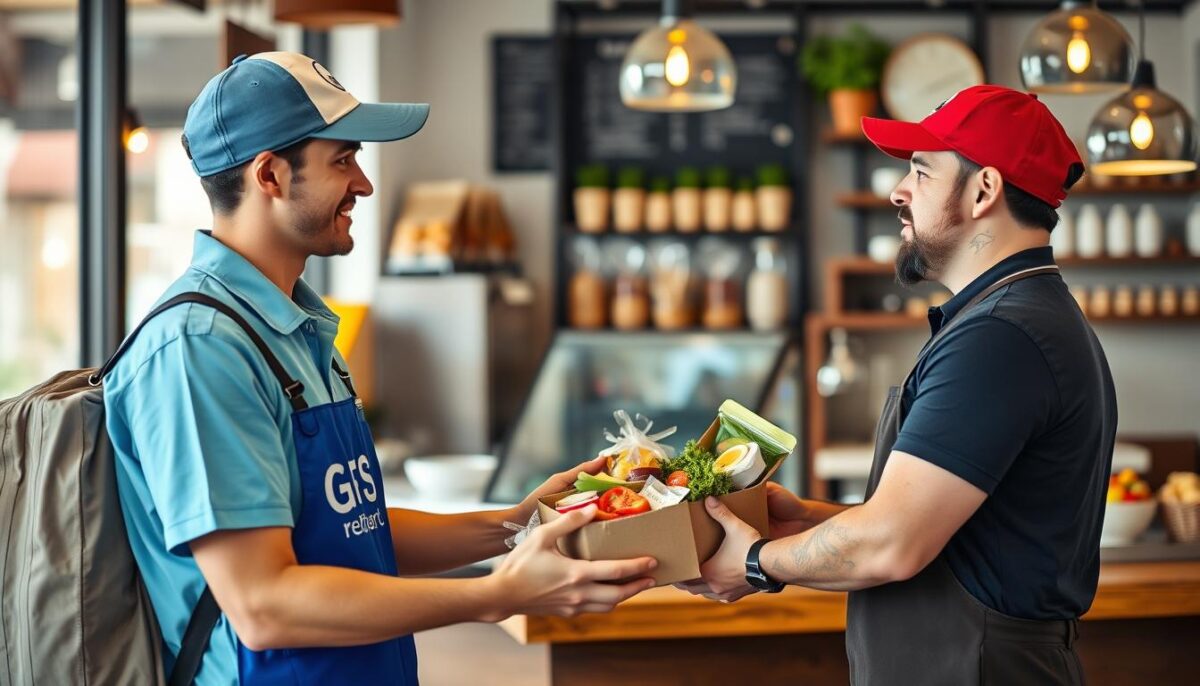
5. McLane Company
McLane Company, with its extensive distribution network of over 80 centers, is a significant player in the food distribution industry. Their expertise in supply chain logistics ensures consistent, on-time deliveries, making them a reliable partner for restaurants.
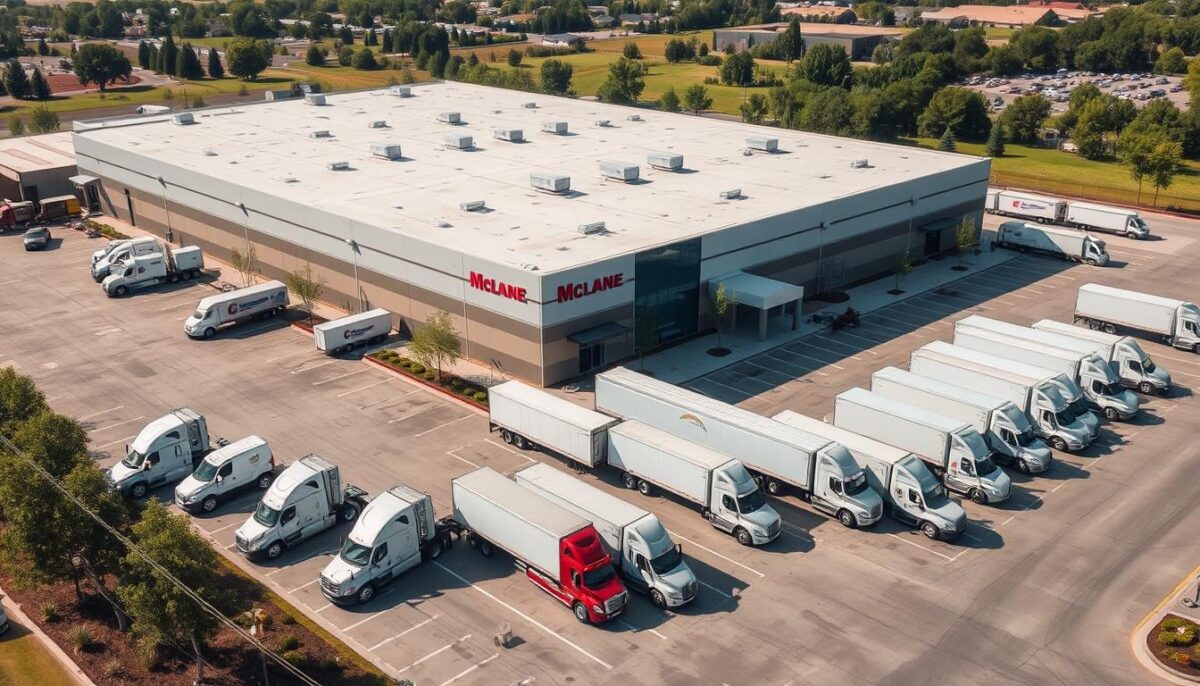
Specialized Food Distributors for Unique Restaurant Needs
The right food distributor can make all the difference for restaurants with specialized culinary requirements. While national distributors provide a wide range of products, specialized distributors offer tailored solutions for restaurants with unique needs.
KeHE Distributors: Natural and Organic Focus
KeHE Distributors is a leading specialized distributor for restaurants focusing on natural and organic food offerings. With an annual revenue of $5.5 billion and a commitment to sustainable practices, KeHE is ideal for farm-to-table concepts and health-conscious eateries.

KeHE’s extensive selection of specialty foods and products enables restaurants to create unique menu items that appeal to diners with dietary restrictions. Their commitment to natural and organic products aligns with the growing demand for healthier dining options.
Ben E. Keith Foods: Southern U.S. Specialist
Ben E. Keith Foods is a premier foodservice distributor in the Southern United States, serving over 14,000 customers from 11 distribution centers. With a deep understanding of regional cuisine and strong relationships with local producers, Ben E. Keith Foods is well-positioned to support Southern-style restaurants and regional chains.
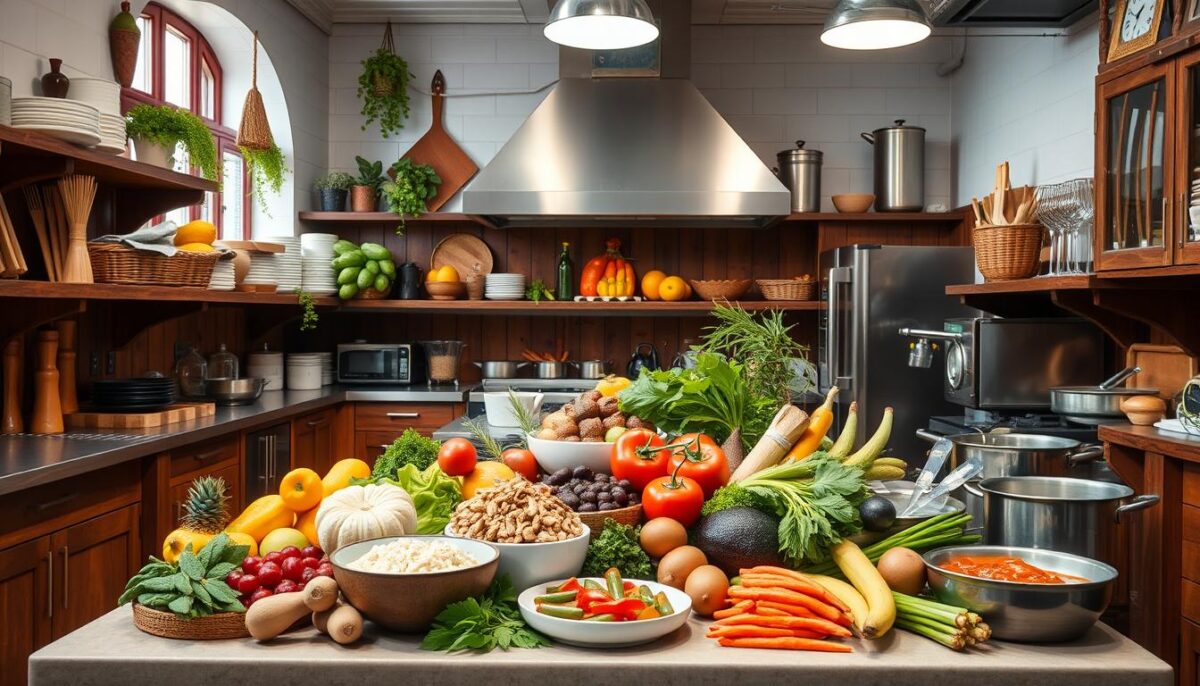
Specialized distributors like Ben E. Keith Foods offer personalized service and expert product knowledge, often resulting in better menu development support and ingredient education for restaurants. By partnering with these distributors, restaurants can differentiate themselves in a competitive market through access to unique, hard-to-find ingredients.
By working with specialized distributors alongside primary distributors, restaurants can optimize their supply chain without creating logistical headaches. This strategic approach enables restaurants to meet their unique needs, whether focusing on organic ingredients, local sourcing, or international specialty items.
Regional Food Distributors Worth Considering
In the competitive world of restaurant food supply, regional distributors are making their mark. While national companies have their advantages, regional food distributors often provide benefits that can’t be matched, including deeper local market knowledge, more flexible delivery schedules, and stronger relationships with local producers.
Shamrock Foods: Western U.S. Excellence
Shamrock Foods, founded in 1922, is a leading foodservice distributor based in Phoenix, Arizona. With annual revenue of $4.8 billion, they serve over 24,000 customers across the US through 11 distribution centers. Shamrock Foods focuses on providing high-quality, fresh ingredients to restaurants, healthcare providers, and educational institutions.
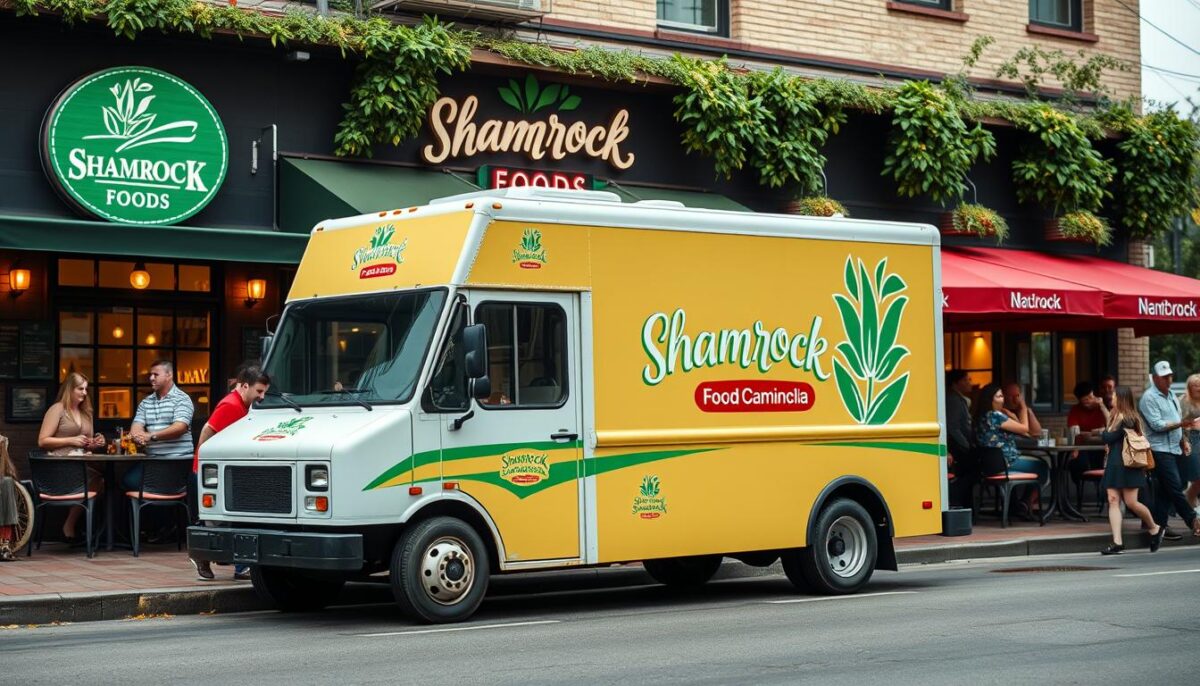
Cheney Brothers: Southeastern Powerhouse
Cheney Brothers, a family-owned business founded in 1925, is a foodservice distributor based in Riviera Beach, Florida. They generate annual revenue of $3.0 billion and serve over 20,000 customers across the US, the Caribbean, and Central and South America through 11 distribution centers. Cheney Brothers focuses on supplying high-quality products to restaurants, hotels, and institutional clients.

Regional distributors like Shamrock Foods and Cheney Brothers offer personalized customer service and faster problem resolution than their national counterparts. They can help your restaurant navigate seasonal availability and regional product variations more effectively. By partnering with these regional specialists, you can strengthen your connection to the local food supply chain and community, potentially becoming a valuable selling point for customers who prioritize local sourcing.
Supply Chain Innovations Transforming Food Distribution
Supply chain innovations are revolutionizing the food distribution industry, enhancing efficiency and transparency. The integration of advanced technologies is transforming how food is sourced, stored, and delivered to restaurants.
Blockchain Technology for Enhanced Transparency
Blockchain technology is gaining traction in food supply chains, providing a way to track food origins and handling conditions. By utilizing blockchain, restaurants can assure customers about the quality and safety of their ingredients. This technology enhances supply chain transparency, allowing for real-time tracking and verification of food products.
The use of blockchain in food distribution is described as “enhancing efficiency, food safety, and transparency.” Many supply chains currently lack detailed visibility, making it hard to guarantee product quality. With blockchain, restaurants can access real-time data about their ingredients, building customer trust.

AI-Driven Inventory Management Solutions
AI-driven inventory management systems are revolutionizing the industry by accurately predicting demand patterns, automatically generating orders, and optimizing stock levels. This reduces both shortages and excess inventory, improving overall chain efficiency.
| Technology | Benefits | Impact on Food Distribution |
|---|---|---|
| Blockchain | Enhanced transparency, real-time tracking | Improved food safety, increased customer trust |
| AI-driven Inventory Management | Accurate demand prediction, optimized stock levels | Reduced shortages and excess inventory, improved efficiency |
These innovations are not only improving food safety and distribution efficiency but also helping distributors reduce costs. This can translate to better pricing and service options for restaurants. By embracing these technologies, restaurants can benefit from enhanced supply chain efficiency and transparency.
Sustainable Practices in Modern Food Distribution
Sustainable practices have become a cornerstone in the modern food distribution industry. As the demand for eco-friendly and responsible business practices grows, food distributors are adapting to meet these new expectations.
Environmental Impact Reduction Initiatives
Leading food distributors are now implementing comprehensive sustainability programs that include electric delivery fleets and solar-powered warehouses. These initiatives significantly reduce the carbon footprint associated with food distribution. For instance, companies are investing in water conservation systems and striving to achieve zero-waste facilities. Such efforts not only contribute to environmental sustainability but also enhance the distributors’ reputation among eco-conscious consumers.
- Electric delivery fleets reduce greenhouse gas emissions.
- Solar-powered warehouses decrease reliance on non-renewable energy sources.
- Water conservation systems help minimize water waste.
- Zero-waste facilities aim to eliminate waste sent to landfills.
Farm-to-Table Distribution Models
Farm-to-table distribution models have gained popularity as they promote sustainable sourcing and support local economies. By directly sourcing products from farmers, restaurants can reduce transportation costs and foster community development. This approach not only results in higher-quality products but also enhances the dining experience by offering menus crafted with ethically sourced ingredients.
- Direct sourcing supports local farmers and community development.
- Reduced transportation costs contribute to overall sustainability.
- Higher-quality products improve customer satisfaction.
- Ethically sourced ingredients enhance the dining experience.
By embracing sustainable practices, food distributors can play a crucial role in creating a more environmentally friendly supply chain. As consumers increasingly prioritize sustainability, restaurants that partner with eco-conscious distributors can benefit from enhanced brand reputation and customer loyalty.
How to Choose the Right Food Distributor for Your Restaurant
To ensure the smooth operation of your restaurant, it’s essential to partner with a food distributor that meets your specific needs. The process involves understanding your restaurant’s unique requirements and evaluating potential distributors based on several key factors.
Assessing Your Specific Restaurant Needs
Begin by assessing your restaurant’s specific distribution needs, considering factors such as menu complexity, volume requirements, storage capacity, delivery frequency, and budget constraints. For instance, if your menu includes a wide variety of specialty products, you’ll need a distributor who can consistently provide these items. Create a table to organize your needs:
| Need | Description | Priority |
|---|---|---|
| Menu Complexity | Variety of dishes and ingredients | High |
| Volume Requirements | Quantity of ingredients needed weekly | High |
| Storage Capacity | Available space for storing ingredients | Medium |
Building Strong Distributor Relationships
Building strong relationships with your distributors goes beyond transactional interactions. It requires clear communication, a mutual understanding of business goals, and consistent feedback loops. Regularly evaluate your distributor’s performance against your restaurant’s needs, and be prepared to consider alternative suppliers if necessary. For example, you can assess their reliability by tracking on-time deliveries and product quality.

By carefully assessing your restaurant’s needs and building strong relationships with your distributors, you can enhance your operational efficiency, improve menu innovation capabilities, and better respond to changing customer preferences. This strategic approach will ultimately contribute to the success and competitiveness of your restaurant business.
The Financial Impact of Selecting the Right Distributor
The right food distributor can make a significant difference in a restaurant’s profitability and operational efficiency. Last year, restaurants that switched to optimal suppliers saw profit margins increase by up to 23%, while those that didn’t continued to struggle.
Cost Savings Opportunities
Strategic partnerships with food distributors offer various cost savings opportunities, including volume discounts, reduced delivery fees, and inventory management assistance. By leveraging these benefits, restaurants can significantly reduce their operational costs. For instance, collaborative purchasing arrangements can help smaller restaurants achieve the buying power of larger operations.
| Cost Savings Opportunity | Description | Potential Savings |
|---|---|---|
| Volume Discounts | Bulk purchasing at discounted rates | Up to 15% |
| Reduced Delivery Fees | Consolidated deliveries and optimized routes | Up to 10% |
| Inventory Management | Efficient stock management and reduced waste | Up to 8% |
Long-Term Financial Benefits
Investing in a strong distributor relationship yields long-term financial benefits beyond immediate cost savings. These include menu engineering support, market insights, and business growth opportunities. By partnering with the right distributor, restaurants can enhance their overall business efficiency and increase their competitiveness in the market.

As noted by industry experts, “Collaborative purchasing is a strategic approach where restaurants team up to buy supplies, reducing costs and increasing their bargaining power with suppliers.” This approach is becoming increasingly popular in 2025, allowing smaller restaurants to access high-quality supplies and stay competitive.
Future Trends in Restaurant Food Distribution for 2025 and Beyond
As we look to 2025 and beyond, the restaurant food distribution landscape is poised for significant changes. The industry must keep up with rapid supply chain changes to remain competitive.
Several emerging trends will shape the future of restaurant food distribution. Technology integration will continue to transform the foodservice industry, with advancements in predictive analytics, automated ordering systems, and real-time inventory tracking.
Technology Integration Predictions
The use of technology in food distribution will become more prevalent, enabling restaurants to streamline their operations and improve efficiency. This will lead to better supply chain management and reduced costs.
Changing Consumer Demands and Their Impact
Customer expectations are driving changes in the food distribution market. Distributors are adapting to provide more detailed information about product origins and handling, meeting the growing demand for transparency and sustainability.
Conclusion
In the dynamic world of restaurant food distribution, selecting the right partner can be a game-changer for your business. I’ve provided a comprehensive overview of the best food distributors for restaurants in 2025, highlighting the importance of aligning with a supplier that meets your specific needs.
The foodservice landscape is evolving, driven by technological advancements, sustainability practices, and changing customer expectations. As a result, it’s crucial to regularly reassess your distribution partnerships to ensure they continue to support your operations and help you stay competitive.
By choosing the right distributors and building strong relationships with them, you can improve your operations, reduce costs, and enhance the quality of food you serve to your customers. This, in turn, can lead to a better dining experience and ultimately drive business success.
FAQ
What are the key factors to consider when selecting a food distributor for my restaurant?
When choosing a food distributor, consider their supply chain efficiency, product offerings, sustainable practices, and ability to meet your restaurant’s specific needs. I also recommend evaluating their customer service and ability to provide specialty products.
How have food distributors adapted to the changing needs of the foodservice industry?
Food distributors have evolved by incorporating technology integration, such as blockchain and AI-driven inventory management, to enhance their services. They’ve also focused on sustainability and offering specialty foods to cater to diverse customer demands.
What are the benefits of partnering with a regional food distributor versus a national one?
Regional food distributors often provide more personalized service and a deeper understanding of local market needs. They may also offer farm-to-table distribution models and more flexible supply chain options. National distributors, on the other hand, typically have a broader product range and more extensive resources.
How can I assess the quality of a food distributor’s products and services?
To evaluate a food distributor’s quality, I suggest reviewing their product offerings, checking for quality control measures, and assessing their customer service. You can also ask for references and review their sustainability practices to ensure they align with your restaurant’s values.
What role do sustainable practices play in modern food distribution?
Sustainable practices are becoming increasingly important in the food distribution industry. Many distributors are now focusing on reducing their environmental impact through initiatives like eco-friendly packaging and local sourcing. As a restaurant owner, you can benefit from partnering with a distributor that shares your commitment to sustainability.
